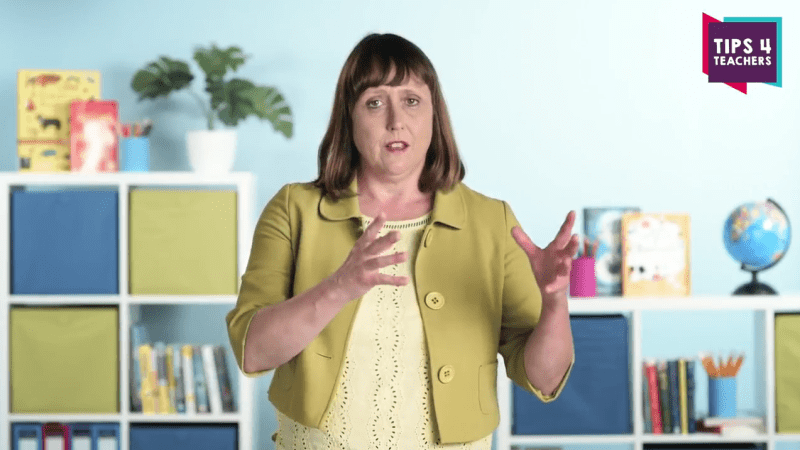Teacher stress – We need to tackle the root causes

Free cake on a Friday is all very well, but if we really want to improve teachers’ lives we need to tackle the root causes of stress, says Kat Howard…

- by Kat Howard

From yoga classes and cake on a Friday to free tea and coffee and ‘kindness fairies’ leaving notes in pigeonholes, wellbeing has become somewhat of a disingenuous franchise within education during the time that I have been teaching.
An industry of its own creation, the tokenism of wellbeing in schools infuriated me so much that I sat down and wrote a book about it. It isn’t that I have an issue with cake – far from it – but I do when this plethora of sticking-plaster strategies are used in a feeble attempt to make staff feel less overwhelmed.
All too often there is a complete and utter disconnect between how we want people to feel, and how they actually feel.
When teachers report sitting through late night wellbeing Insets, thinking about the to-do list waiting for them in the classroom, we have an aching level of irony that cannot be ignored. Many teachers are leaving the profession, sometimes reluctantly.
I spoke to a vast number of teachers about why the job felt insurmountable, and why they were considering leaving, and it became apparent that it wasn’t that they didn’t want to teach anymore, but that they didn’t feel that what they did with their majority of their day was teaching.
The largest proportion of leaving teachers are women between the ages of 30-39, where teaching has lost its shine as the profession to be a part of while raising children. Instead, we spend more time with the children of others than we do our own.
Shining a light
We could be doing so much more to retain teachers than we do, but that is not to say that schools are without compassion and care; there is merely a sense of disconnect at present.
When I wrote my book, Stop Talking About Wellbeing, I wanted to highlight a range of ways that senior leaders and teachers can work symbiotically to improve conditions in schools.
I explored aspects such as curriculum planning, feedback and how to build purposeful relationships between students, staff and parents.
I wanted to shine a light on various schools that I had come across during my research that were getting things right, and taking a keen focus on valuing teachers as their most valuable commodity. If we are to keep incredible teachers in schools, we must take a far more no-nonsense approach to partaking in an honest dialogue around complications, and work collaboratively to find solutions.
Wellbeing is about being in a school where a sense of collective purpose is the status quo, and anything that doesn’t help students to learn, or support teachers to teach, is disregarded as superfluous.
Kat Howard is assistant principal at The Duston School in Northampton and author of Stop Talking About Wellbeing (£15, John Catt Educational). Find her at saysmiss.wordpress.com and follow her on Twitter at @saysmiss.
Instead, their time is taken up with burdensome, extended administration to log or track behaviour and marking that feels both unsatisfying to complete and incapable of aiding improvement.
Finding a balance
Alternatively, some teachers feel alienated by the complexities of working with people in schools: relationships with middle or senior management that gear towards the hierarchal or obstructive; a difficulty in navigating the turmoil of the shift from term time to the holidays and back again, or simply being able to find a balance between being a teacher and being a person in their own right.
These tasks take teachers further and further away from the very reasons that brought them to be in the profession to begin with, and it ends up as nothing more than sheer disillusionment. In addition, as reports in the media share stories of teachers working 50+ hour weeks, we have to ask to what extent the teaching methodology of working around a family is genuine or authentic anymore.
The largest proportion of leaving teachers are women between the ages of 30-39, where teaching has lost its shine as the profession to be a part of while raising children. Instead, we spend more time with the children of others than we do our own.
Shining a light
We could be doing so much more to retain teachers than we do, but that is not to say that schools are without compassion and care; there is merely a sense of disconnect at present.
When I wrote my book, Stop Talking About Wellbeing, I wanted to highlight a range of ways that senior leaders and teachers can work symbiotically to improve conditions in schools.
I explored aspects such as curriculum planning, feedback and how to build purposeful relationships between students, staff and parents.
I wanted to shine a light on various schools that I had come across during my research that were getting things right, and taking a keen focus on valuing teachers as their most valuable commodity. If we are to keep incredible teachers in schools, we must take a far more no-nonsense approach to partaking in an honest dialogue around complications, and work collaboratively to find solutions.
Wellbeing is about being in a school where a sense of collective purpose is the status quo, and anything that doesn’t help students to learn, or support teachers to teach, is disregarded as superfluous.
Kat Howard is assistant principal at The Duston School in Northampton and author of Stop Talking About Wellbeing (£15, John Catt Educational). Find her at saysmiss.wordpress.com and follow her on Twitter at @saysmiss.











